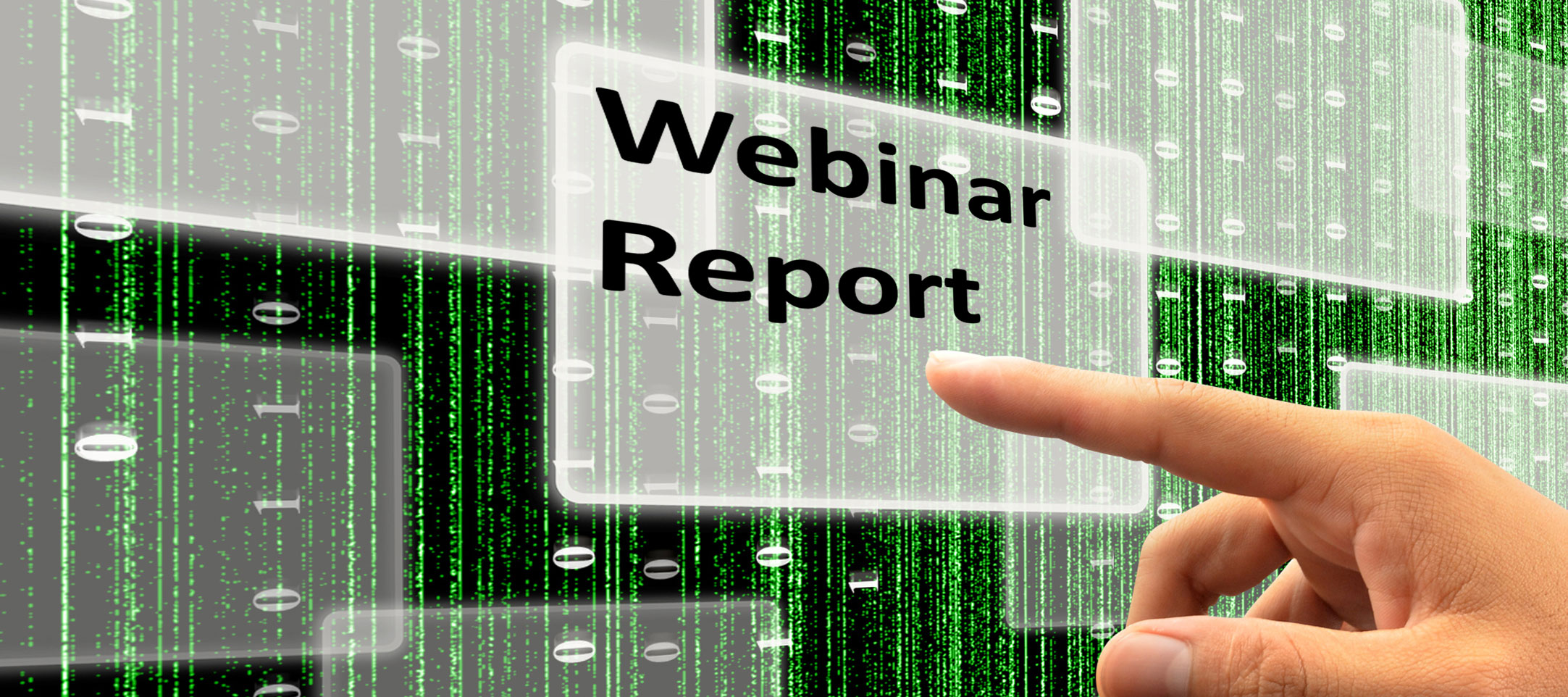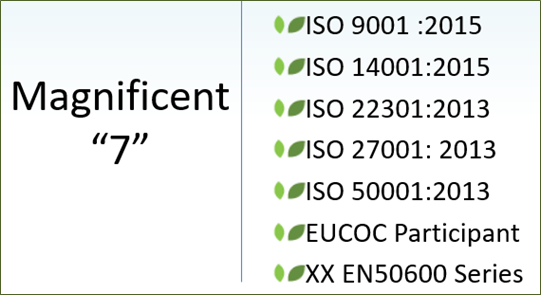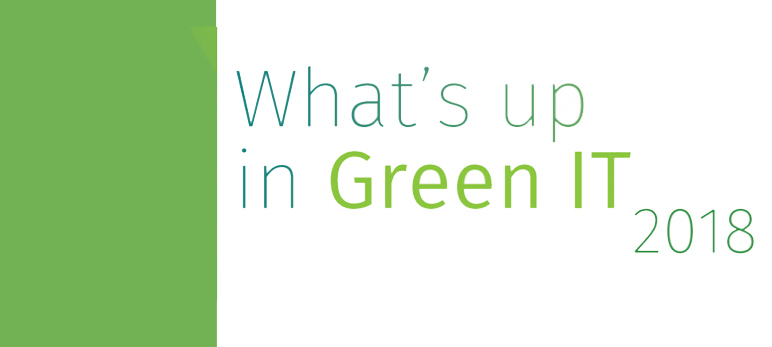
New GHG ICT Sector Guidance, SAT-S Ready to Use & Data Centres Standards
ICTFOOTPRINT.eu proudly hosted its 6th webinar edition with an esteemed line-up of experts on ICT sustainability. Alex Bardell, Member of Executive Board at Sustainability for London, focused his presentation on Data Centres standards, reviewing them in relation to energy efficiency and sustainability. Silvana Muscella, founder/CEO of Trust-IT Services and Project Coordinator of ICTFOOTPRINT.eu, introduced the Self-Assessment Tool for ICT Services (SAT-S). SAT-S is a useful, free, quick and easy-to-use tool to calculate the carbon footprint of ICT services. Furthermore, Andie Stephens, Senior Customer/Project Manager at Carbon Trust and member of ICTFOOTPRINT.eu External Advisory Group, shared insights from the ICT Sector Guidance for the GHG Protocol Product Standard, which provides detailed guidance for the foot-printing of ICT products and services
What European Data Centres Standards are out there for us?
A standard is a technical document designed to be used as a rule, guideline or definition. It is a consensus-built, repeatable way of doing something. It is important to understand what different types of standards are available, regardless their scope and Alex Bardell wanted to clarify any confusion about what different standards are available for users.
“Standards” (note the capital S) are created by International or National Standards Organisations supported by National Standards Bodies or National Governments, respectively. In Europe, there are 3 recognised organisations for Standards: CEN, CENELEC & ETSI. In addition to these 3 international bodies, there are many National ones (e.g. BSI – United Kingdom, DIN – Germany) which create standards for use within their own country. However, standards can be created by anyone, such as private companies and NGO’s, but their credibility is limited, since they are not independently reviewed by external organisations. These standards are registered with a “lower s”.
Regarding Standards/standards and guidelines for data centres, there are several ones available around the world. There are standards created by associated organisations (e.g. American Telecommunications Industry Association or TIA), and rating systems, like the one from Uptime Institute, which focuses on resilience and uptime. Lists of best practices are also available, such as the EU Code of Conduct for Data Centres (Energy Efficiency), with 153 best practices relating to energy efficiency. These best practices were incorporated into the EN 50600 series as a technical report.
The EN 50600 series, explained in ICTFOOTPRINT.eu 3rd webinar, provides a holistic overview of data centres, focusing on different areas such as building construction, power distribution and management and operational information. A dedicated factsheet, with more and easy information about EN 50600 series, can be found in ICTFOOTPRINT.eu Map of ICT Standards.
The Eureca project which tackles the lack of knowledge and awareness on how to identify and procure environmentally sound and sustainable data centres, created a list of “Magnificent 7” of “must haves” for those who want to make their data centres sustainable, for both enterprise and colocation organisations.

Easy tool to understand the carbon footprint of ICT Services? Try SAT-S tool
ICT industry accounts for approximately 2 percent of global CO2 emissions and a decrease of emissions of just 15% has the potential to generate savings of €600 billion by 2020 (source). To become “green in ICT”, not only the energy consumed by IT equipment is important, but also all the steps from in the life cycle of ICT products and services, such as extraction of raw materials, manufacturing process, and transportation.
As highlighted by Silvana Muscella, there are many complex Standards and methodologies for green IT, which aren’t easily understood by professionals who do not have a strong technical background. The relevant ones are mapped in the ICTFOOTPRINT.eu Map of ICT Standards, with dedicated templates with simple information on how to use them. Nevertheless, being aware of the difficulty of becoming green in ICT, ICTFOOTPRINT.eu developed the SAT-S (Self-Assessment Tool for ICT Services), a first easy-to-use practical tool for approaching the measurement of carbon footprint of ICT Services. With only 5 minutes, all those who complete the SAT-S get a personalised report about the carbon footprint produced by their ICT Service.

The tool is made up of a simple guided questionnaire and a calculation engine was built based on a simplified Life Cycle Assessment loosely based on standard methodologies (GHG and ETSI, available as well on ICTFOOTPRINT.eu Map of ICT Standards). SAT-S provides the approximate climate change & primary energy footprint of your ICT service over one year, indicating also intuitive equivalents of the amount of energy consumed and carbon emissions produced for an easy understanding (i.e. emissions of an average car travelling for 1 Km).
To better support the ICT sector in its quest towards sustainability, ICTFOOTPRINT.eu will launch by end of 2017 the SAT-O (Self-Assessment for Organizations). SAT-O will be even more useful, with a more holistic approach thanks to more complex calculations, while keeping user interface, questions and results simple.
ICT players are welcome to try for free the SAT-S, available on https://ictfootprint.eu/en/self-assessment-tool
New and Fresh Guidance for assessing the life cycle GHG emissions of ICT services
The brand-new ICT Sector Guidance was created by a group convened to build consensus on guidance to perform a product & service GHG inventory in the ICT sector, with the support of an Advisory Board of 200 people from 50 companies in over 45 different countries around the world. The guide, to be published and publicly available in July/August 2017 from the GHG Protocol Website, was based on the GHG Protocol Product Life Cycle Accounting and Reporting Standard, one of the most widely used methods to measure carbon footprint in the world.
The guides provide insights on assessing Life Cycle GHG emissions of both ICT goods and services, covering 3 main chapters:

These 3 chapters are supported by 2 technical chapters on hardware and software, typical components available in ICT Services. Hardware chapter provides 4 different approaches to calculate and process hardware emissions according to life cycle stages. Software is split into 2 sections, the first focuses on emissions calculations during the Full Life Cycle Assessment, while the second one focuses only the emissions produced during the software usage stage.
According to Andy Stephens, “The biggest benefit stakeholders can get from this guide, compared to others available, is that the guide goes into a lot more detail compared to formal ICT Standards. It addresses the most common ICT services and explains how a GHG product standard and other formal standards/methods can be easily applied. Plus, each chapter has practical examples, based on real life situations.”
Dedicated factsheets of each chapter of ICT Sector Guidance for GHG Protocol Standard are available for download in ICTFOOTPRINT.eu Map of ICT Standards
Download the Webinar's slides
Download the Webinar's report
See the webinar below




 © 2018 ICTFOOTPRINT.eu – ICTFOOTPRINT.eu has received funding from the European Commission’s Horizon 2020 research and innovation programme under the Grant Agreement no 690911. The content of this website does not represent the opinion of the European Commission, and the European Commission is not responsible for any use that might be made of such content.
© 2018 ICTFOOTPRINT.eu – ICTFOOTPRINT.eu has received funding from the European Commission’s Horizon 2020 research and innovation programme under the Grant Agreement no 690911. The content of this website does not represent the opinion of the European Commission, and the European Commission is not responsible for any use that might be made of such content.